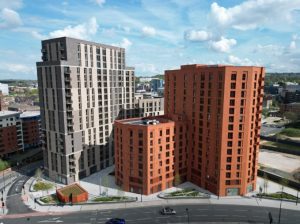Property Interview: DPP director schools the region on the rise of Academies

SCHOOLS have been on the agenda for decades, and with the increasing focus on Academies, demand for the property industry to continue to build them will only grow.
Academies are self-governing not-for-profits, but can be supported by additional individual or corporate sponsors, which can make planning them or extending them complex, said Michelle Bath, director at DPP Planning in Leeds.
The ambitious Building Schools for the Future programme was axed in 2011, and it has been replaced with the Priority School Building Programme, which Ms Bath said is “more of a back to basics programme than BGF schools were.”
Many of these come under the Academy banner, which has been pushed further by George osborne in recent Budgets.There are now 3,304 Academies in the UK, 15 times the amount there were in 2010.
2,446 are converter academies; successful schools that have chosen to convert to benefit from the autonomy the Academy label provides, and 858 are sponsored.
Working with Laing O’Rourke, planning consultancy DPP has helped build batches of schools which are privately financed. One particular incident saw DPP submit seven planning applications for seven different schools in six weeks.
“Education is obviously a huge sector,” said Ms Bath, ” and now Academies are taking school provision out of the hands of local authorities. There is always a risk of planning getting involved in politics. It’s much worse down in London, with parties and councillors getting embroiled in really divisive politics.
Academies have sponsors, she said, a business that is involved in its running, but they will still be subject to Ofsted.
“The question is who holds the responsibility for academies, who is paying for them and accountable for them on a more local level?”
From a planning perspective this could make the provision of schools much more difficult, Ms Bath said. With more stakeholders in the development of a school, the planning and issues around it will no doubt become more complex.
With two different provisions, priority schools and basic needs provisions, the later more site specific. “It’s a hard nut to crack,” said Ms Bath, and universities are a whole different ball game.
“Universities spend billions to attract students. Universities are businesses now. They have to justify fees just as a business would have to justify investment,” she said.
“With universities though there is more strategic masterplanning on the planning side, you work towards an overall vision whereas schools work on a more project-to-project basis.
“Academic building is still a big growth area, with the scale of students coming to live and work in places like Leeds. It’s all about retaining talent, reversing the trend that sends students down to London when they are finished their degrees.”








